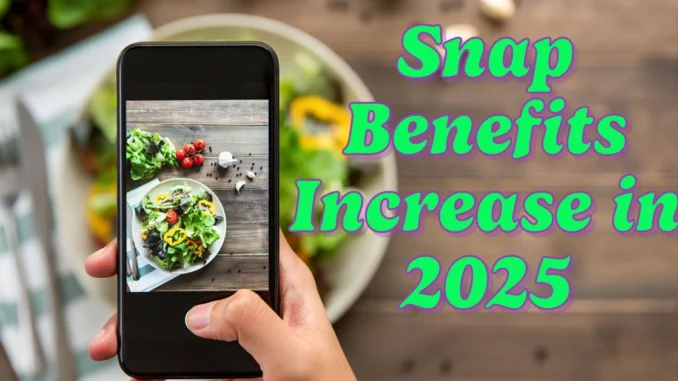
As the new year approaches, reviewing your personal budget becomes crucial, particularly if you are a current or prospective recipient of the Supplemental Nutrition Assistance Program (SNAP). With the start of the federal fiscal year on October 1, 2024, the Food and Nutrition Service (FNS) of the U.S. Department of Agriculture (USDA) implemented significant cost-of-living adjustments (COLA) to SNAP. These updates are designed to ensure that benefits align with the current costs of maintaining a basic standard of living. Here’s a detailed breakdown of what these changes mean for FY 2025.
Table of Contents
Increased SNAP Allotments for FY 2025
For fiscal year 2025, SNAP benefits have been increased across most states and U.S. territories. These adjustments are effective from October 1, 2024, through September 30, 2025, reflecting higher maximum allotments and housing limits.
SSA $697 Direct Deposit Rumors: Let’s Clarify the Facts
CalWORKs Check 2025: Eligibility, Benefits, and How to Apply for Monthly Checks
2025 Disability, Retirement, and VA Pay Chart: Payment Dates, Eligibility, and COLA Increase
Maximum Monthly Allotments for Households
For households in the 48 contiguous states and the District of Columbia, the maximum monthly SNAP benefits for FY 2025 are:
- 1 person: $292
- 2 people: $536
- 3 people: $768
- 4 people: $975
- 5 people: $1,158
- 6 people: $1,390
- 7 people: $1,536
- 8 people: $1,756
- Each additional person: $220
SSDI vs. SSI in 2025: Key Differences, Requirements, and Payment Updates
January 2025 SNAP Food Stamps: State-by-State Payment Schedule and Key Details
Variations in Allotments by Location
Maximum allotments differ significantly by location due to varying costs of living:
- Hawaii: $1,723 for a family of four
- Alaska: Ranges from $1,258 to $1,953 for a family of four, depending on the region
- Guam: $1,437 for a family of four
- U.S. Virgin Islands: $1,254 for a family of four
The minimum SNAP benefit remains unchanged at $23 for the lower 48 states and DC. In Alaska, it ranges from $30 to $47, and in Hawaii, it is $41.
$4,018 Disability Payments to Arrive January 3rd for Select Beneficiaries: Are You Eligible?
SSDI Payments Increase in 2025: How the COLA Increase Impacts Your Benefits
Updated Income Eligibility Standards
SNAP eligibility is determined by gross and net income limits, adjusted annually to reflect 130% of the federal poverty level in most areas. For FY 2025, the gross monthly income limits are as follows:
- 1 person: $1,580
- 2 people: $2,137
- 3 people: $2,694
- 4 people: $3,250
- 5 people: $3,807
- 6 people: $4,364
- 7 people: $4,921
- 8 people: $5,478
- Each additional person: $557
New York Residents to Receive $900 Heating Stimulus—Are You Eligible?
$500 Family Tax Credit 2025: Eligibility, Income Limits & how to Claim
Regional Income Variations
Gross income limits also vary for Alaska, Hawaii, Guam, and the U.S. Virgin Islands, reflecting their higher living costs. These changes aim to make SNAP assistance more accessible to households with lower incomes in these regions.
How COLA Adjustments Affect Recipients
The SNAP COLA adjustments ensure that benefits increase in response to rising costs of living, helping households maintain their purchasing power. However, individual benefits still depend on net income, which is calculated by subtracting allowable deductions from gross income. These deductions may include housing costs, child care, and medical expenses, further tailoring assistance to meet individual needs.
Planning Ahead for FY 2025
For current or prospective SNAP recipients, understanding these updates is essential for effective financial planning. The increased allotments and updated eligibility standards aim to better support households navigating rising living expenses. Whether you are already receiving SNAP benefits or considering applying, these changes underscore the importance of reviewing your budget and financial goals as we enter 2025.
Leave a Reply